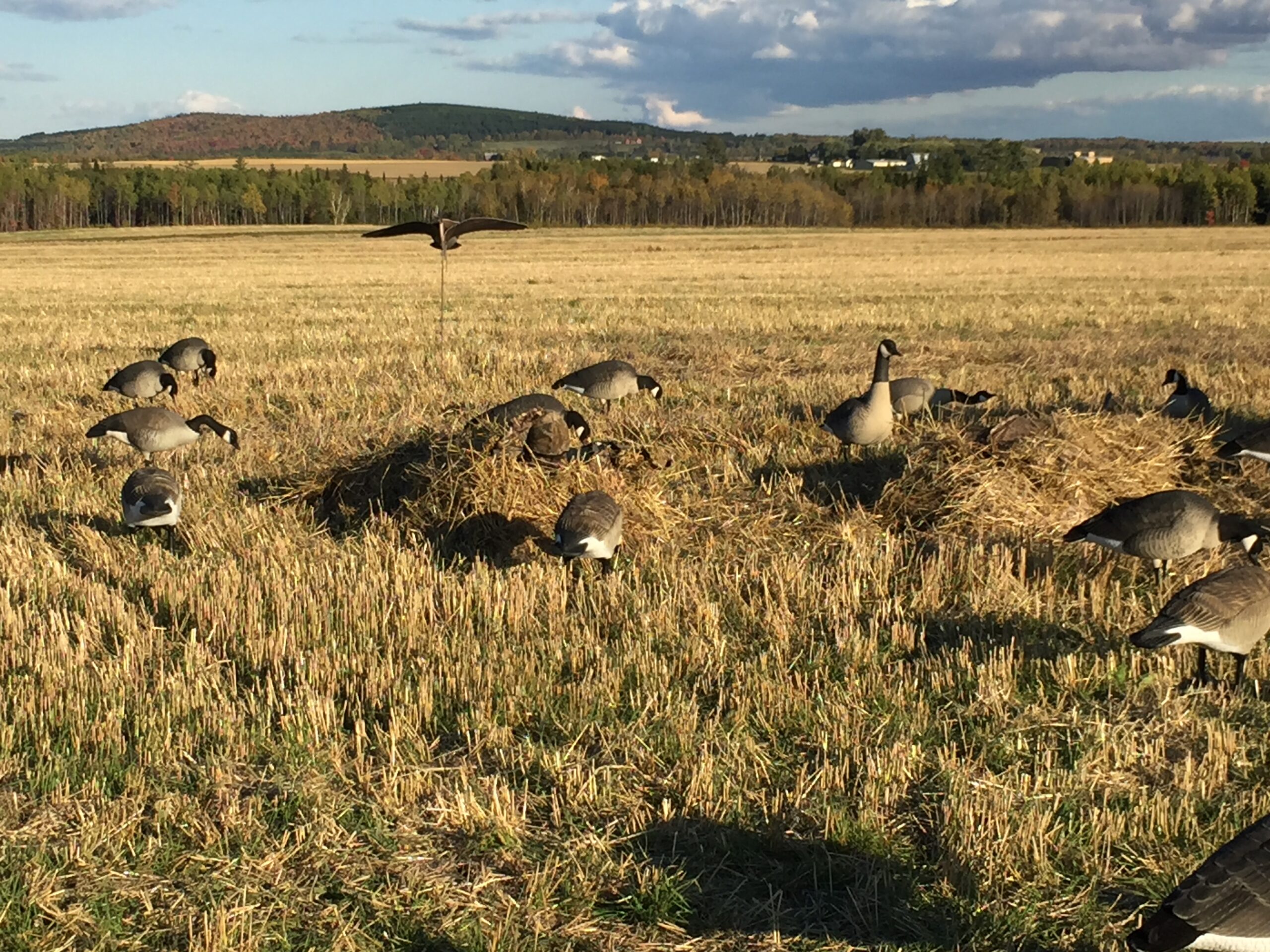
Selecting the right hunting location, be it field, river or pond, is often considered the key to consistent waterfowling success. If ducks and geese aren’t regularly feeding or resting at that spot, not much shooting takes place.
Even when a sportsman does find a hot spot, three other elements must be provided to assure consistent wingshooting; excellent camouflage, and concealment, good calling and a realistic decoy spread.
Regardless of what brand, size or style of decoy you select, or what combination of silhouette, shell, full-body, flyer or floater decoys are set out, some sort of motion in the fake flock will improve chances of luring birds within shotgun range. Perhaps even more crucial to success is a way to coax far-off flying flocks to swing near enough to notice your decoy setup. The simplest and perhaps oldest tactic to attract attention of distant ducks and geese is to wave a flag. This seems a strange option when one of the main rules of waterfowling is to stay completely still as birds approach, but for some reason a flagging motion simulating a goose flapping its wings is acceptable.
My first introduction to flagging was over 40 years ago while goose gunning on Maryland’s eastern shore, long before Maine had any native or migratory honkers to hunt. There were always moving skeins of geese criss-crossing the far skyline in every direction and every once in a while the guides waving flag would entice a bunch to turn our way. Then the decoys and calling would often seal the deal. The flag was just a simple 18-inch square of black cloth stapled to a three-foot wooden dowel.

Placing a pair of silhouette style goose decoys on short poles and allowing them to sway and rotate in the wind adds realism to all the static decoys on the ground. (Courtesy of Bill Graves)
My next positive experience using a flag was a dozen years later when I began sea duck hunting along the Maine coast. This flag had a streak of white cloth between two black swatches to imitate the light underwing of a flying duck but was still flapped overhead in a figure-eight motion to attract distant birds to come closer and spot the decoys on the water. It proved very productive and soon various sizes, shapes and styles of flags began appearing in duck and goose blinds all over the northeast.
It wasn’t long before several companies producing hunting gear or decoys got a glimpse of the future and began producing and selling commercial versions of several types of flags. Soon there was a flag shaped like a flying goose made of lightweight weather-resistant material and color printed top and bottom with full feather realism. From there the options have snowballed; one super effective option was a goose kite, a nearly weightless Tyvek material shaped and screen printed to imitate a real goose, tied to a 3-foot string attached to an extremely lightweight pole extendable to 15 feet. The lightest breeze kept it aloft and visible to any far-off passing flock.
The next leap of technology was to the somewhat controversial mechanical, battery-operated spinning wing or flapping wing decoys, fully remote-control-operated. The “spinners” proved so effective that several states actually banned their use, but flags of all styles are legal as well as flapping decoys. Along with a goose silhouette style flag, I deploy a life-size honker decoy called a Lucky Goose with remote-control wings that have adjustable flapping speed.
I also often use a 3-D silhouette of a landing goose that sets on a 4-foot pole that’s pounded into the ground. Made of a fairly stiff plastic/fiberglass compound, the extended wings will lift and fall in a slight breeze and rotate on the pole so it always looks like it’s landing among the decoys on the ground. Any bit of decoy or flag motion not only attracts the attention of passing waterfowl, it diverts the bird’s sharp eyes away from the blind and hunters.
Technology never stands still in the world of decoy manufacturing and advancement of goose and duck hunting aids and accessories. There’s an item and price range for every wallet, but sometimes basic is best. For less than $5 and a visit to the fabric and hardware store, you can construct a very serviceable, effective flag that requires no batteries, special care or maintenance. Training is minimal and use is guaranteed to improve results. Now that’s another flag that deserves a salute.




